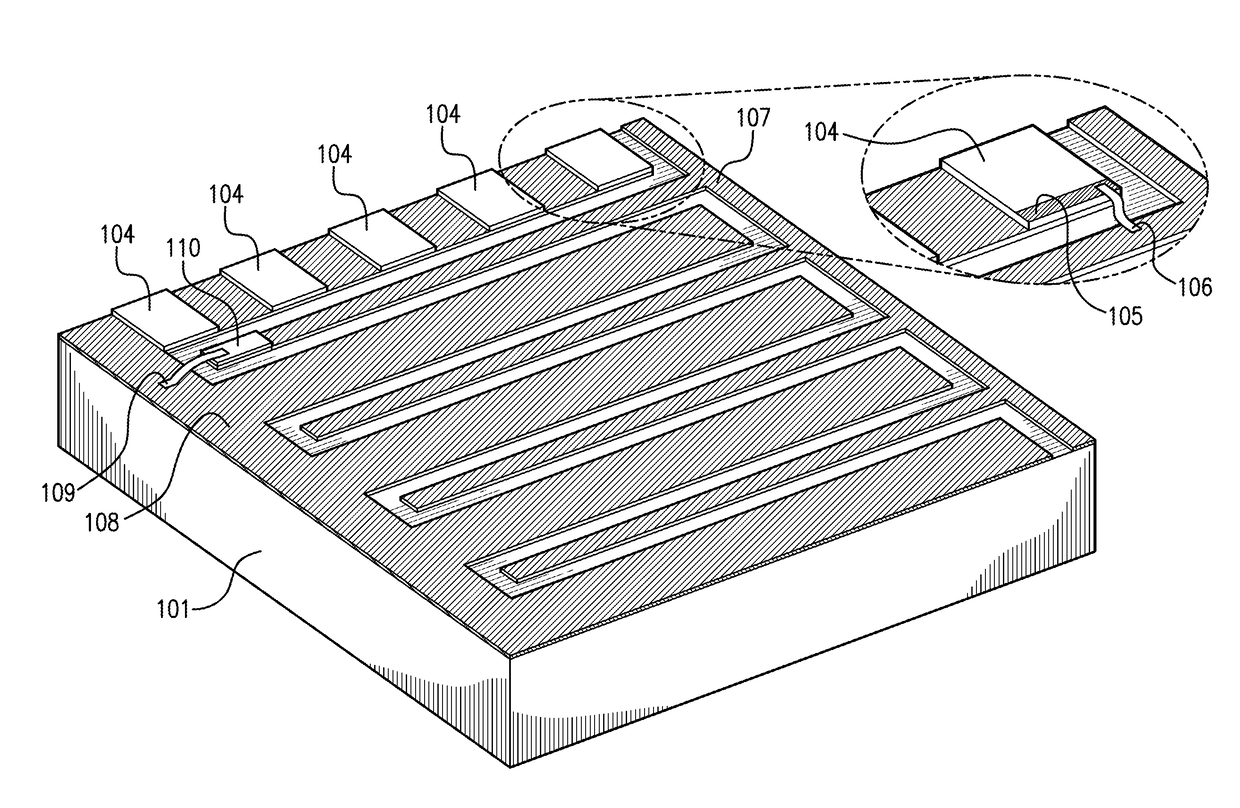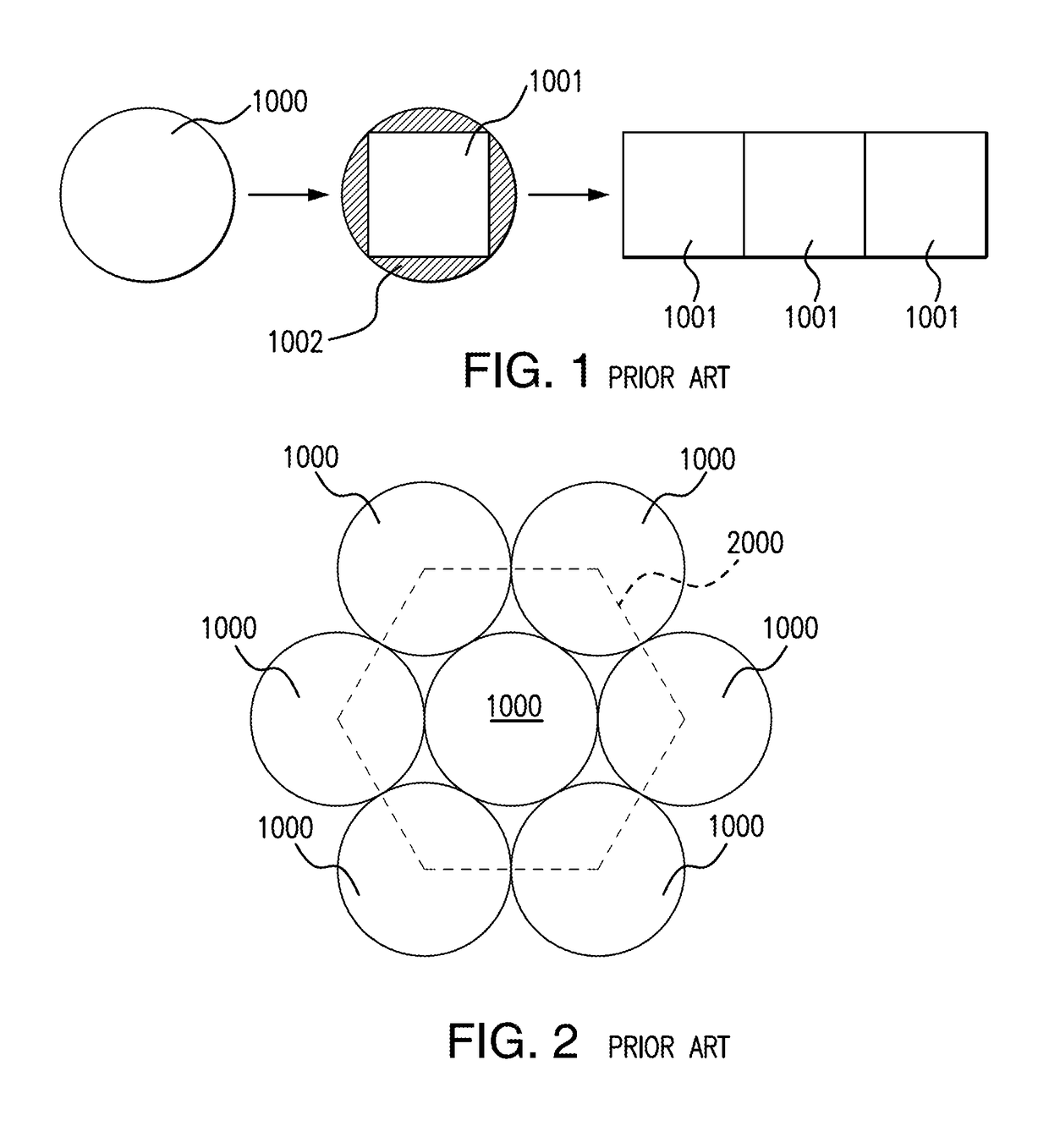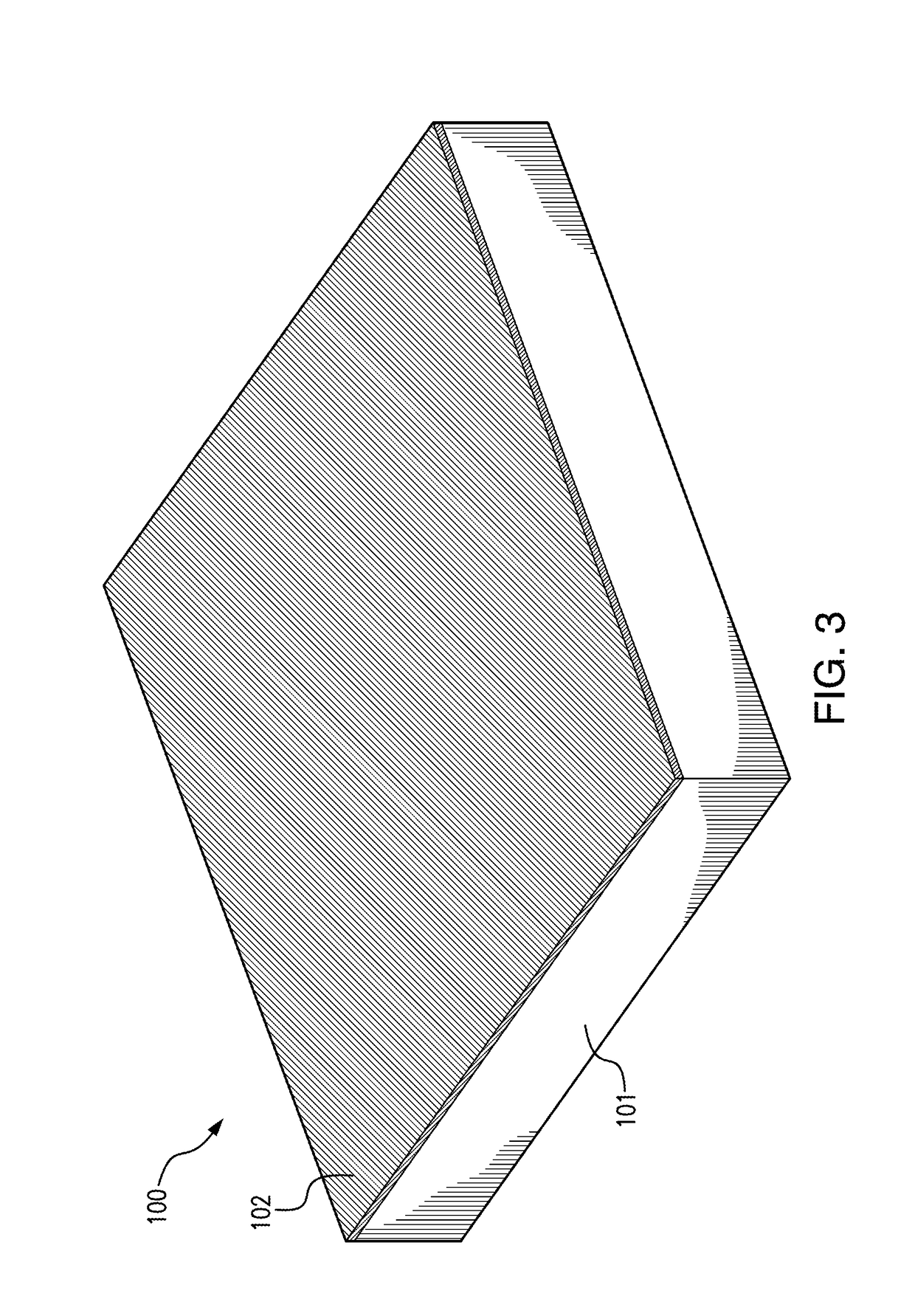Parallel interconnection of neighboring space-qualified solar cells via a common back plane
a solar cell and parallel connection technology, applied in the field of photovoltaic power devices, can solve the problems of increasing the overall cost of the photovoltaic array or panel, inefficient use of the surface on which the solar cell is mounted, and inefficient use of the available space, so as to achieve high wafer utilization
- Summary
- Abstract
- Description
- Claims
- Application Information
AI Technical Summary
Benefits of technology
Problems solved by technology
Method used
Image
Examples
Embodiment Construction
[0038]The present disclosure provides a process for the design and fabrication of a solar cell array panel for space application utilizing interconnected modular subassemblies. Although principally concerned with the structure and organization of the modular subassemblies, the solar cells are essential components of such subassemblies, and thus a discussion of III-V compound semiconductor solar cells is in order here.
[0039]FIG. 3 illustrates an example of a support that can be used in an embodiment of the disclosure. The support comprises an insulating support layer 101 and a conductive metal layer 102 arranged on a top surface of the support layer 101. In some embodiments of the disclosure, the metal layer 102 is a copper layer, having a thickness in the range of from 1 μm and up to 50 μm. In some embodiments of the disclosure, the support layer 101 is a Kapton® layer, that is, a polyimide film layer. Preferably the metal layer is attached to the support layer in an adhesive-less m...
PUM
 Login to View More
Login to View More Abstract
Description
Claims
Application Information
 Login to View More
Login to View More - R&D
- Intellectual Property
- Life Sciences
- Materials
- Tech Scout
- Unparalleled Data Quality
- Higher Quality Content
- 60% Fewer Hallucinations
Browse by: Latest US Patents, China's latest patents, Technical Efficacy Thesaurus, Application Domain, Technology Topic, Popular Technical Reports.
© 2025 PatSnap. All rights reserved.Legal|Privacy policy|Modern Slavery Act Transparency Statement|Sitemap|About US| Contact US: help@patsnap.com



